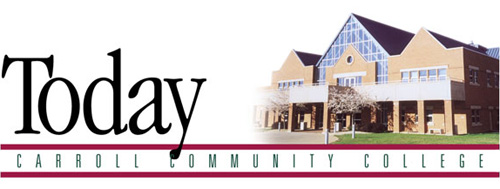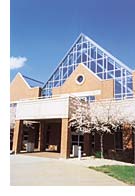
![]()
Contents
Trustees Receive Institutional Effectiveness Report
Better Freshman Year to Highlight Technology, Value
National Survey Finds Community Colleges Key in Technology Economy
Institutional Research Update
![]()
Institutional Research Update
County Survey Finds Widespread Internet Use
 A
county-wide telephone survey of Carroll County completed last summer found
that four out of five adult residents regularly use personal computers,
and that three-fourths of the respondents had a computer in their home.
Nine of ten computer users had Internet access, with two-thirds of them
accessing the World Wide Web ten or more times a month.
A
county-wide telephone survey of Carroll County completed last summer found
that four out of five adult residents regularly use personal computers,
and that three-fourths of the respondents had a computer in their home.
Nine of ten computer users had Internet access, with two-thirds of them
accessing the World Wide Web ten or more times a month.
The survey, designed and analyzed by the college’s institutional research office, reached 400 adult residents of Carroll County. In addition to questions about computer and Web usage, the survey asked about recent educational experiences, educational plans, knowledge of the college, and awareness of college marketing efforts.
Students to Rate College Services
Carroll Community College students will have an opportunity to rate the performance of all aspects of the college in a survey to be administered this spring by the college’s institutional research office. Reflecting a renewed emphasis on providing exemplary customer service, the college has decided to repeat the survey first conducted in spring 1999.
In last year’s survey, 652 students rated 32 areas of the college, including campus safety (top-rated with an average rating of 4.32 on a five-point scale), student services, course scheduling, program offerings, and the bookstore. Ten of the 32 areas received average ratings of 4.0 or above. Carroll’s faculty received three of the top ten ratings, with quality of instruction (4.15), faculty attitudes toward students (4.15), and faculty availability outside of class (4.04) all receiving outstanding ratings from Carroll students. Other areas garnering high student praise (with mean ratings above 4.0) included registration, library services, student access to computers, classroom technology, and admissions.
Focus Group Findings Guide Class Schedule Redesign
As part of its comprehensive marketing research program initiated in January 1999, the college’s institutional research office has conducted a series of focus group interviews with high school students, new Carroll freshmen, adult learners, and Carroll County business leaders. One example of the use of focus group findings has been the redesign of the credit schedule of classes.
Focus groups with recent high school students included examination of a varied selection of publications from Carroll and other colleges. Participants were able to review the publications and express their preferences in terms of format, layout, design, and contents. Class schedule design was an area of particular interest to the college, as the schedule is both an indispensable reference and a marketing piece mailed countywide.
Based on the focus group findings, a number of changes were made to the credit schedule. The layout was switched from calendar (landscape) orientation to magazine (portrait) orientation. A two-column page layout with larger, bolder headings was instituted. Complete course descriptions were inserted within the course scheduling information. A listing of courses only offered in the fall or spring semesters was added. A four-color cover was introduced. Two features from earlier schedules that were carried over based on the focus group recommendations were the 8.5 by 11 size and the use of white paper stock instead of the newsprint used by other colleges.
Did you know?
- Two-thirds of all Carroll County residents who attend a Maryland college part-time attend Carroll Community College.
- Sixty-nine percent of Carroll students who transferred to a Maryland public four-year college or university in 1994-95 earned a bachelor’s degree within four years. The comparable rates for transfers from other community colleges in Maryland ranged from 44 to 52 percent.
- Enrollments in Carroll’s workforce development continuing education courses increased by over 27 percent during the three-year period ending in June 1999.
- All 32 completers of the licensed practical nursing (LPN) program over the past four years have passed the LPN certification exam.
![]()